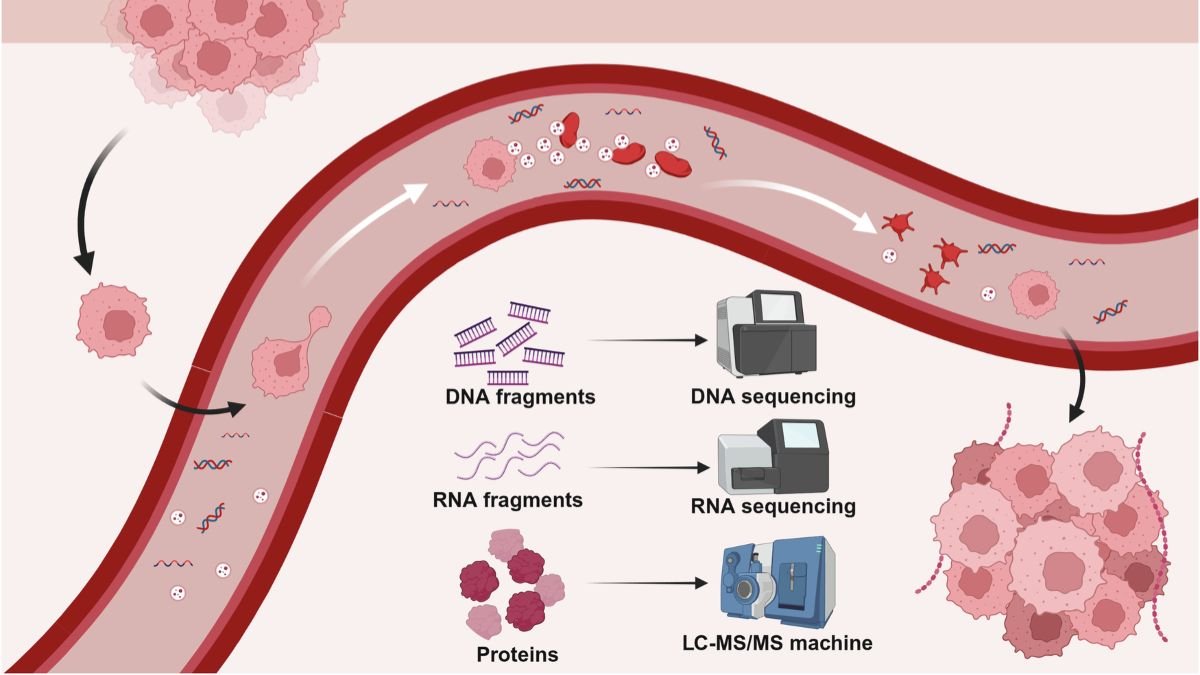Cancer is one of the biggest health challenges in today’s world. The earlier it is detected, the greater the chance of successful treatment. Traditionally, cancer was diagnosed by tissue biopsy, i.e., tissue removed from the body for examination. However, modern science has now introduced a new technique called liquid biopsy. This technique identifies cancer cells and DNA fragments from blood or other bodily fluids (such as urine or saliva).
In this article, we will understand the benefits and challenges of liquid biopsy in 10 key points.
What is liquid biopsy?
Liquid biopsy is a non-invasive test that detects the presence of cancer by simply taking a blood sample. In this test, scientists study circulating tumor DNA (ctDNA) and circulating tumor cells (CTCs). These tiny fragments circulate in the blood and provide clues to the presence of cancer. This procedure allows doctors to diagnose a patient’s cancer without major surgery.
How is it different from a traditional biopsy?
Tissue biopsy involves removing a piece of the tumor using surgery or a needle to examine the cancer. This procedure is painful and time-consuming. Liquid biopsy, on the other hand, can be performed using a blood sample alone. This means the patient doesn’t need to be hospitalized or face significant risks. Furthermore, repeating it repeatedly makes it easier to monitor the cancer’s progress.
Early Cancer Detection
The biggest advantage of liquid biopsy is that it can help detect cancer at an early stage. When cancer is in its early stages, DNA fragments from cancer cells are found in the blood. By detecting these, doctors can begin treatment early, significantly increasing the patient’s chances of survival.
Monitoring Treatment Progress
Cancer treatment is long and complex. During chemotherapy, radiotherapy, or immunotherapy, doctors want to know how the patient’s body is responding. Liquid biopsy can easily track the number of cancer cells and changes in DNA during treatment. This indicates whether the treatment is successful or requires further adjustment.
Risk of Cancer Recurrence
A major risk factor for cancer is recurrence, i.e., the return of cancer after treatment. Patients often believe they are completely cured, but the cancer silently returns. Liquid biopsy can detect even small levels of cancer DNA remaining in the body. This allows doctors to be alerted before the cancer returns and initiate treatment immediately.
Non-Invasive and Safe Option
Tissue biopsy carries the risk of infection, pain, and bleeding. However, liquid biopsy eliminates these risks. It is a safe and convenient procedure that can be repeated repeatedly without any major complications. It is a great option, especially for elderly and frail patients.
Personalized Medicine
Each patient’s cancer progresses differently and responds differently to different medications. Liquid biopsy allows doctors to understand which genetic mutations are present in a patient’s cancer cells. Based on this, they can develop personalized medicine, i.e., tailor individual medications and treatment strategies to each patient. This further increases the likelihood of success.
Challenges of Liquid Biopsy
While the benefits are numerous, challenges are also not without. The biggest problem is that this technique is not yet accurate for all types of cancer. In the early stages, the amount of DNA from cancer cells in the blood is very low, which can sometimes lead to inaccurate results. Furthermore, its cost is still high, limiting its accessibility to every patient.
Research and Future Prospects
Research on liquid biopsy is rapidly underway worldwide. Scientists are exploring new methods to make this technique more sensitive and accurate. It is hoped that in the coming years, it will become a routine cancer screening test. Just as regular blood sugar or cholesterol testing is done, cancer screening will also become easily available.
Importance for Patients and Society
If liquid biopsy becomes widely available, it could transform the world of cancer. Millions of lives could be saved and patients could receive timely treatment. This would not only be a major achievement for medical science but would also reduce the burden of cancer on society.
Conclusion
Liquid biopsy is proving to be a game-changing technique in cancer diagnosis and treatment. Its advantages, such as early detection, safety, monitoring treatment progress, and warning of recurrence, make it extremely important. Although challenges remain—such as accuracy and cost—in the future, this technology could become more mature and accessible to every patient.
